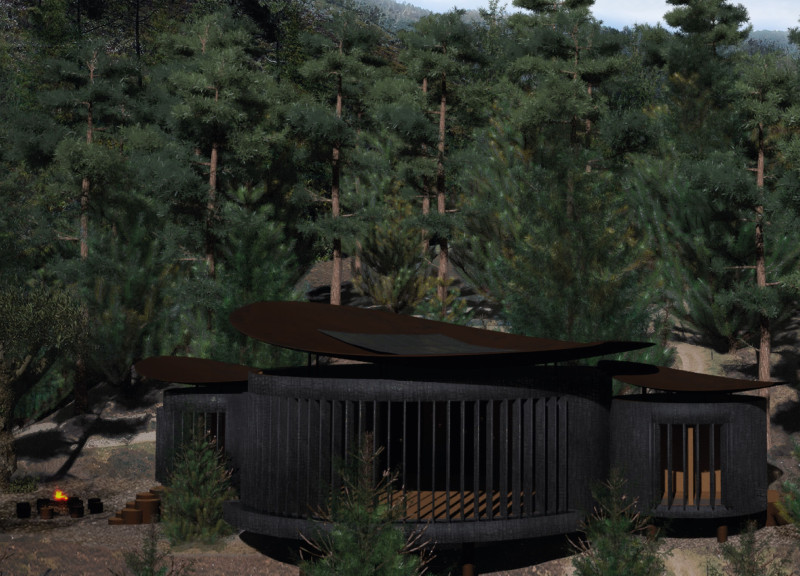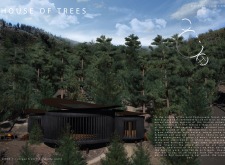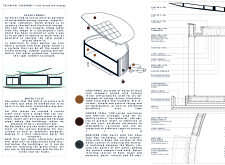5 key facts about this project
The House of Trees is located in the forested landscape of Portugal, designed to provide a peaceful escape for those seeking wellness and introspection. The concept focuses on creating an environment that encourages individuals to reconnect with nature while engaging in mindful practices like yoga. Drawing from the Sanskrit word "Shala," the design reflects a space that promotes personal reflection away from daily distractions.
Camouflage in Nature
The design integrates local tree species, establishing a natural dialogue with the surroundings. The structure utilizes Cork Oak, which acts as a thermal load-bearing element, and Maritime Pine for external cladding, treated with the Shou Sugi Ban technique to enhance its longevity. Eucalyptus trees are selected for their unique leaf structures, which aid in water collection. Additionally, the Olive Tree offers environmental benefits and psychological comfort, particularly within the zen garden, known as Karesanshu.
Spatial Configurations
The House of Trees features dynamic spatial arrangements that alternate between open and enclosed areas. These configurations help maximize natural light and ventilation while ensuring user privacy. This thoughtful approach allows individuals to engage with their environment freely. The balance between indoor and outdoor spaces further strengthens the user experience.
Sustainability Principles
Sustainability is a core aspect of the design. Systems for natural ventilation and water reuse reduce consumption and promote efficiency. A heat pump is integrated into the structure to manage temperature changes throughout the seasons. The roof is designed to capture solar energy effectively, meeting both thermal and electrical requirements. Transparent polycarbonate elements allow for abundant natural lighting, providing clear views of the surrounding landscape.
Organic Integration
The House of Trees reflects a careful interaction between built space and its natural context, enhancing the user's relationship with the environment. The use of local materials helps the structure blend with the forest, offering an experience that is both calming and enriching. The design encourages occupants to explore and reflect, fostering a deeper connection with the tranquility around them.






















































